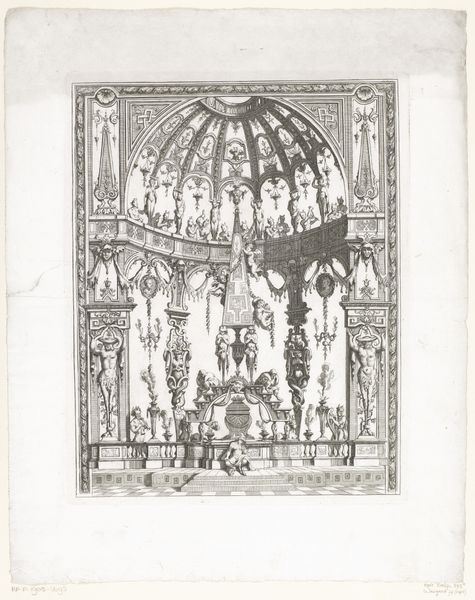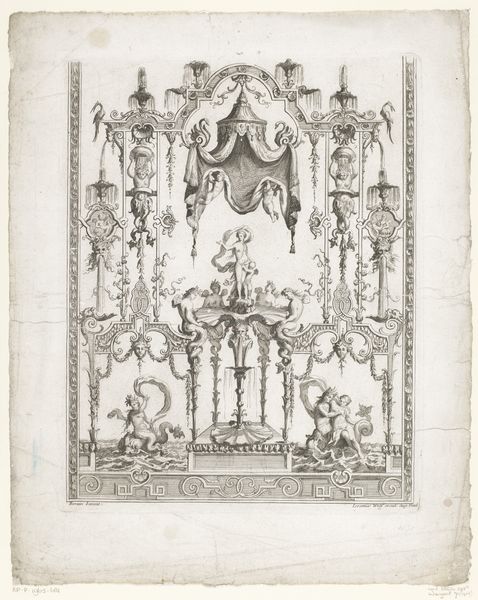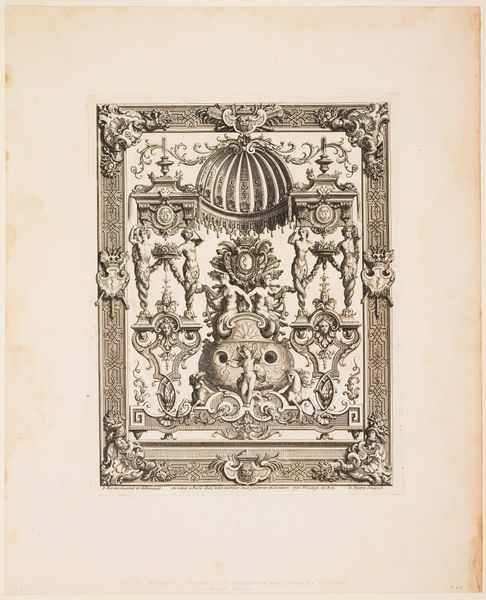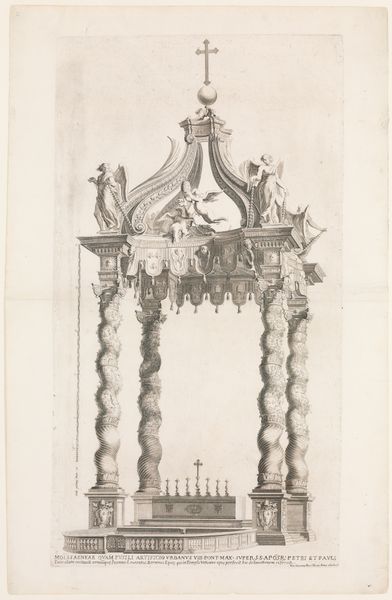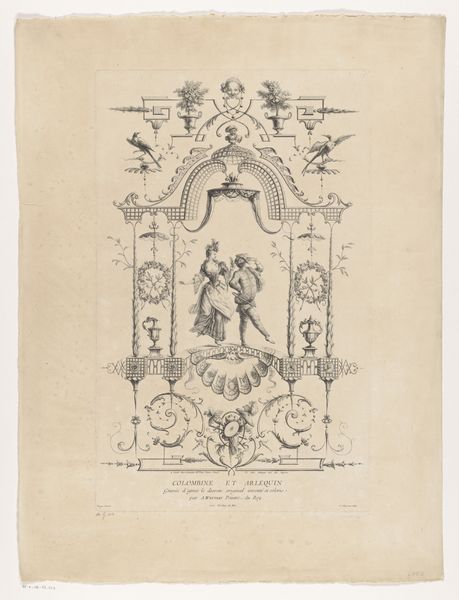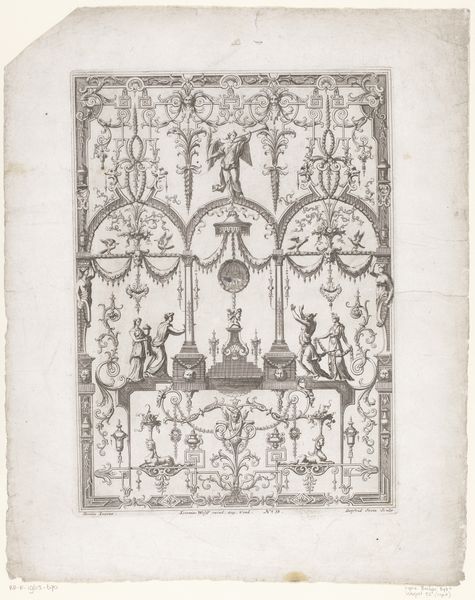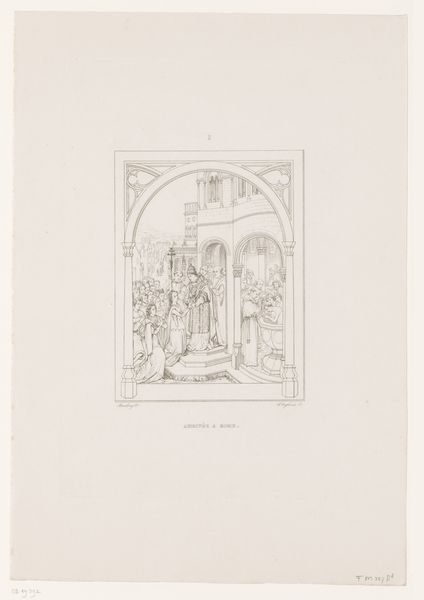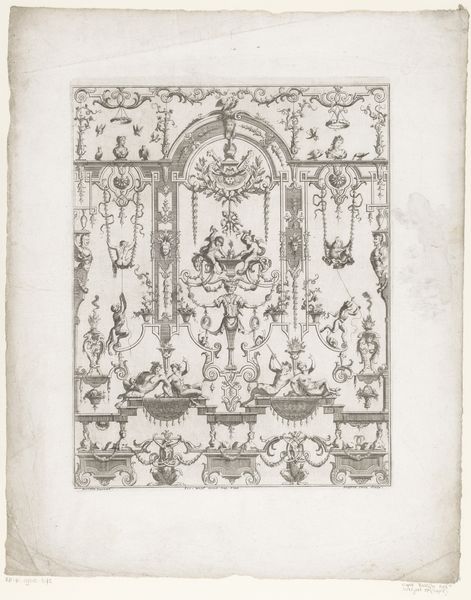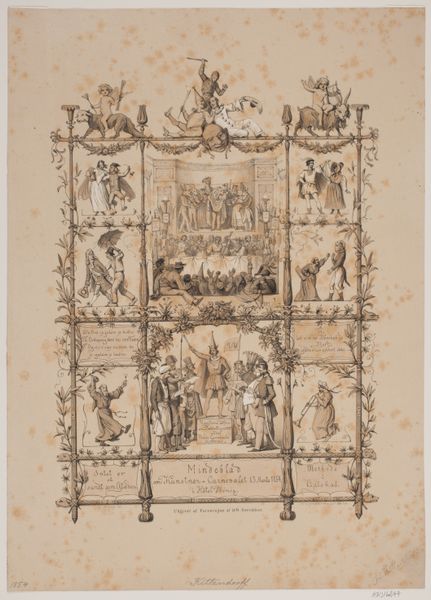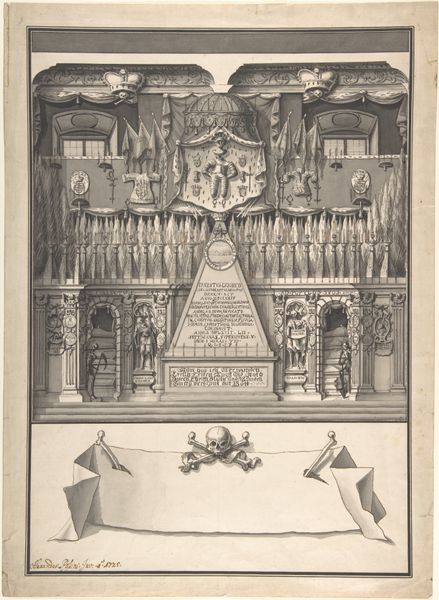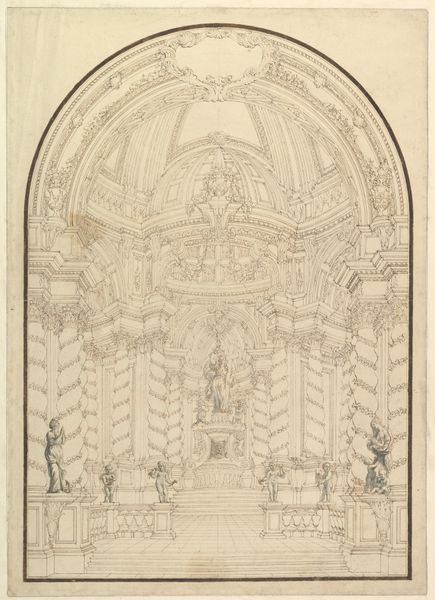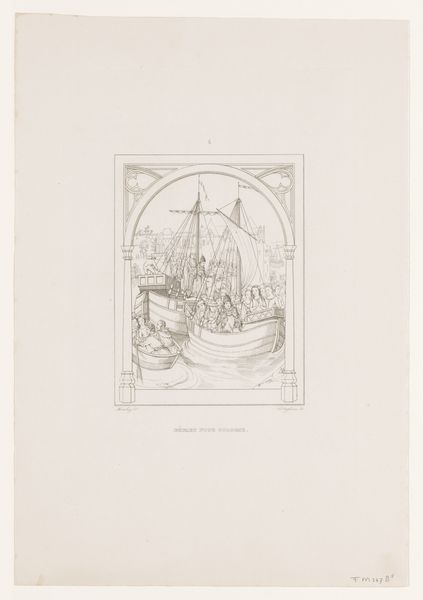
The Satyr Funeral from a series of designs for decorative panels c. 1670 - 1680
0:00
0:00
drawing, print, etching, black, ink, engraving
#
drawing
#
baroque
# print
#
etching
#
etching
#
form
#
black
#
ink
#
line
#
history-painting
#
engraving
Dimensions: 12 1/2 x 10 in. (31.75 x 25.4 cm) (plate)
Copyright: Public Domain
Curator: This detailed etching by Jean Le Pautre, titled "The Satyr Funeral," dates from around 1670-1680. It’s currently held here at the Minneapolis Institute of Art. Editor: My initial reaction is that this piece feels incredibly ornate, almost dizzying with its complexity. I see an amphitheater setting rendered in precise lines. Curator: Indeed. Le Pautre was a master of ornament, and this work exemplifies Baroque sensibilities in its theatricality. It reflects a broader interest at the time in using classical imagery to communicate status. This isn't just a picture; it's a statement about power, using a fantastical, historical lens. The layers of visual detail, including what seem like grieving figures and elaborate structures, contribute to a narrative that’s both elaborate and elusive. Editor: What strikes me is the incredible attention given to the craft of etching. Consider the labor involved in achieving such intricate detail. How does that labor itself become part of the artwork’s meaning? We might even question the implications of turning something so inherently somber – a funeral – into an extravagant, almost decorative piece. What audience was meant to consume this imagery and to what end? Curator: That’s precisely the kind of questioning that makes analyzing historical works so vital. We often impose modern values onto pieces created within completely different frameworks. This particular etching could offer insight into how anxieties of status, death, and public spectacle intersect within 17th-century French culture. Moreover, there is a lot to learn in relation to current questions around public mourning practices today. Editor: Absolutely. By investigating the social and material conditions of its making and its intended viewership, we move past mere appreciation of technique, and confront the very forces that shape culture and consumption. Curator: Thank you. It shows just how richly layered artworks like “The Satyr Funeral” really are. Editor: Indeed. Each line is both a visual element and a record of a hand at work in a specific place, within a certain set of conditions.
Comments
minneapolisinstituteofart almost 2 years ago
⋮
Here the satyrs' music is mournful, for the partially draped satyress at the bottom center appears to have lost her mate. We see the end view of the coffin beneath the stairs where two more grieving satyrs sit. An orchestra and chorus of satyrs occupy the lofty balcony that arcs around the pyramid of the catafalque. Jean Le Pautre and Jean Berain were both extremely prolific designers of ornament that covered surface of everything from tabletops to tapestries in the homes of French aristocrats and royalty.
Join the conversation
Join millions of artists and users on Artera today and experience the ultimate creative platform.
